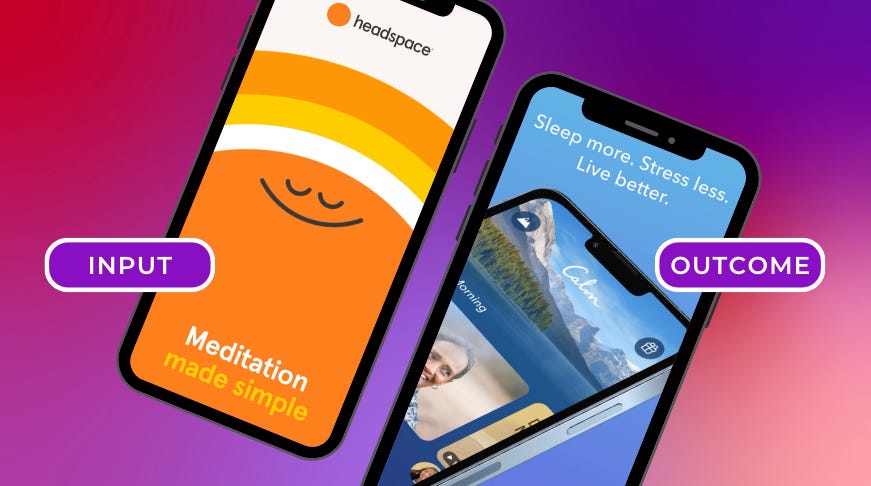In the digital battlefield of meditation apps, Calm has been leading the pack as the most downloaded app for five years, a surprising twist since Headspace was initially expected to take the crown.
Headspace were first to market equipped with a beautiful origin story — its founder's journey from the secular world to becoming a Buddhist monk. They were quickly gaining traction. Yet, as 2018 rolled around, Calm began to outpace its rival.
What strategic moves allowed Calm to come out on top?
It boiled down to a smart mix of market positioning, product innovation, and savvy pricing strategies.
Let's play with some numbers to put things into perspective. Think about how many people meditate and how frequently they do so, versus the universal activity of sleeping. Initially, both Headspace and Calm were vying for the attention of meditation enthusiasts, with Calm positioning itself as the more user-friendly option.
Calm then shifted its strategy to focus not just on the process of meditation but on the outcomes: better sleep, reduced stress, and an overall improvement in life quality. This move broadened its appeal far beyond just meditation practitioners.
While Headspace remained focused on an INPUT — meditation — Calm expanded its positioning to an OUTCOME — achieve a calm mind to sleep more, stress less and live better. So their offerings include sleep stories, focus enhancement techniques, and habit-building tools, shifting from just offering features to promising real-world benefits.
This approach allowed Calm to experiment with pricing in creative ways. Headspace offered a free trial including 10 meditation sessions, but Calm went further by offering a selection of its basic features for free, including meditations and sleep sounds. This strategy turned meditation into a basic commodity, pressuring Headspace and other meditation apps to offer more value to compete.
Over time, Calm's strategy made it increasingly difficult for others to catch up. With more revenue and investment, Calm also enhanced its content by partnering with celebrities like LeBron James and Matthew McConaughey.
Today, Calm remains at the top in the health and meditation app space, with Headspace following. While new apps have entered the market, none have significantly challenged the dominance of Calm or Headspace.
The most promising strategy will likely be unbundling one component of wellness and building the best possible product to serve that use case, applying a Big Fish, Small Pond positioning strategy.
Calm's rise to the top shows that being smart and flexible can make a big difference. It's not just about being the first; it's about really getting what users need and offering them real benefits they can see and feel in their lives.
As we look at Calm and Headspace, we learn that understanding users and constantly improving are key to winning in the tech world.








